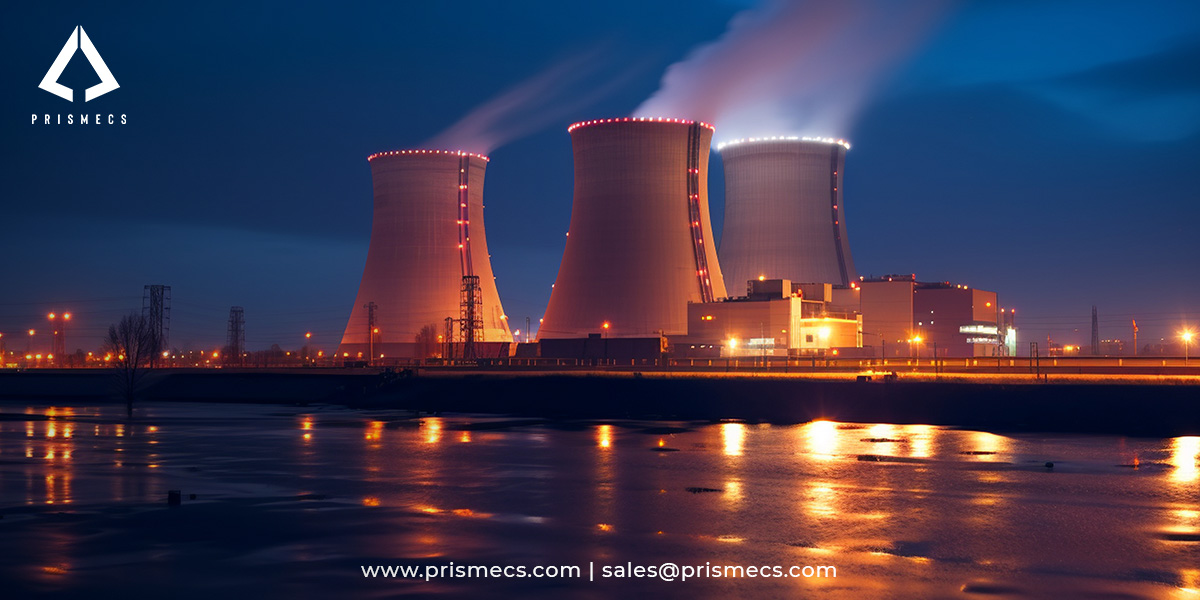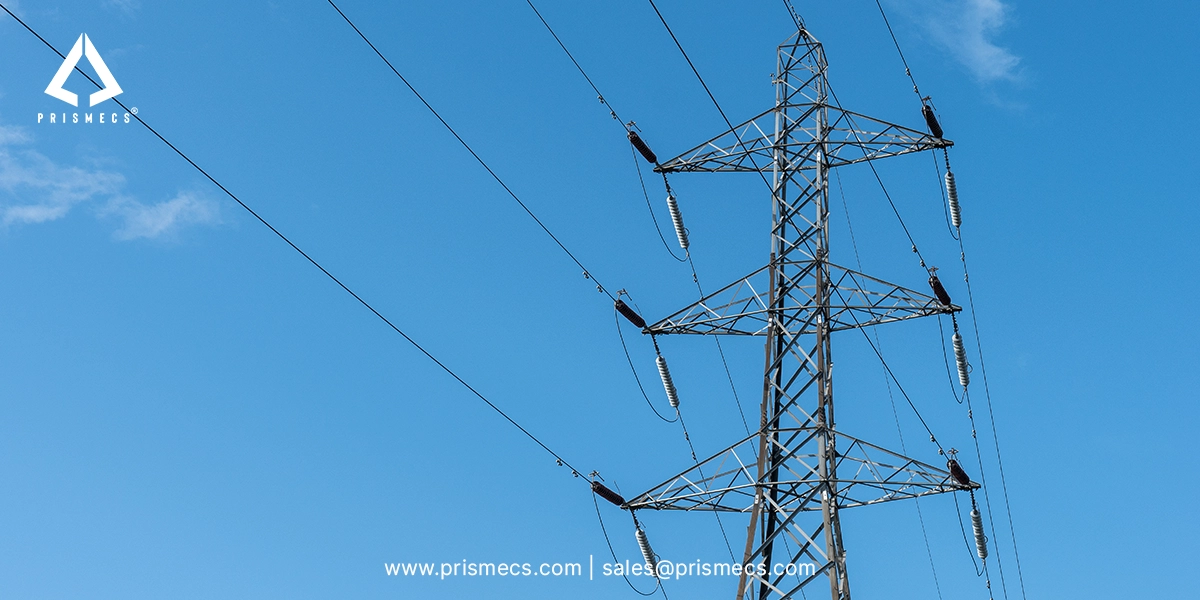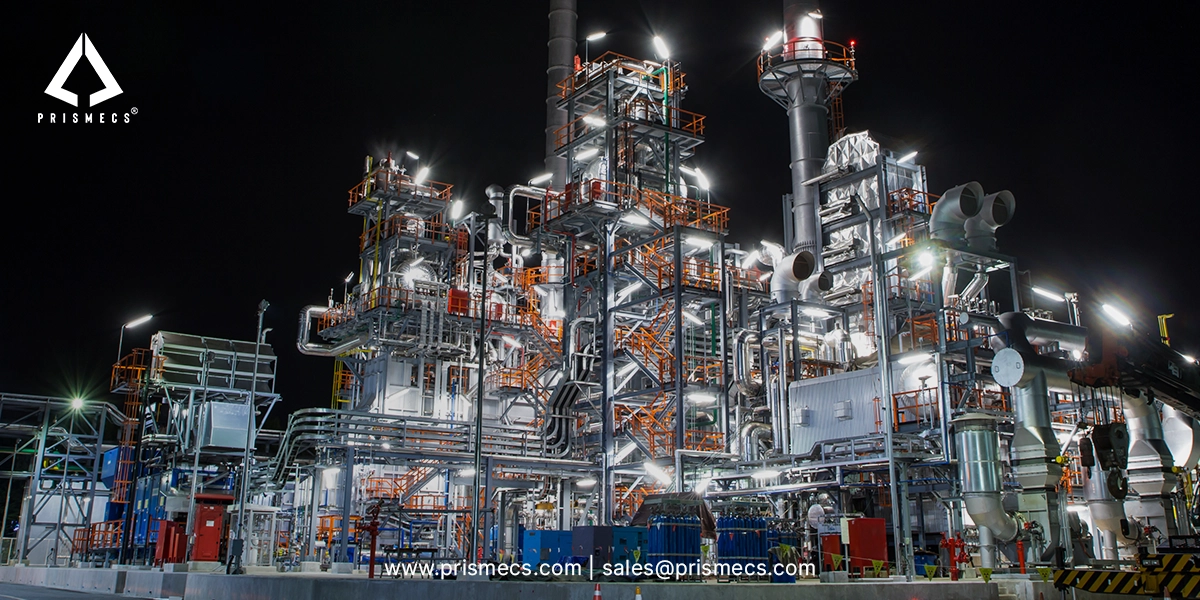
Power plant engineering encompasses more than just creating electricity; it involves managing, designing, and optimizing energy production systems. Power generation facilities vary significantly in complexity, from wind turbines harnessing wind energy to advanced nuclear reactors producing large-scale electricity.
Power plant engineers ensure efficiency, safety, and sustainability in the energy sector. They reduce greenhouse gas emissions. Energy sources and technologies are diverse.
What is Power Plant Engineering?
Power plant engineering is the field that deals with designing, operating, and maintaining places that produce electricity. It covers a broad spectrum, from managing daily operations to developing innovative technologies for power production.
A power plant engineer operates similarly to an architect designing, overseeing, and maintaining energy-generated systems over their lifecycle. The field intersects with various engineering disciplines, making it a cornerstone of modern infrastructure development.
How Power Plants Generate Electricity
A power plant is a facility designed to convert different forms of energy into electrical power. These facilities typically fall into three broad categories:
Renewable Energy Sources
This includes solar energy, wind turbines, and hydroelectric power plants. They use natural resources like sunlight, wind, and water to generate capacity while minimizing greenhouse gas emissions.
Thermal Power Plants
Thermal power plants produce electricity by burning fossil fuels such as coal, oil, and natural gas. Workers burn these fuels to generate heat energy, which turns water into steam. The high-pressure steam drives turbines linked to generators, converting thermal energy into electrical power.
Nuclear Power Plants
Nuclear reactors generate electricity by producing steam to turn turbines. The process converts nuclear fuel into mechanical energy, transforming it into electrical power. Power companies locate power plants near abundant energy resources, ensuring optimal placement for efficiency.
- Windy regions are ideal for wind turbines.
- Coastal sites are best for nuclear power facilities.
- Rivers are suitable for hydroelectric power plants.
Power Plant Engineering Equipment & Types
Efficient energy generation relies on specialized equipment designed to optimize performance and sustainability. Some key components include:
Heat Recovery Steam Generator (HRSG)
An HRSG captures waste heat from industrial processes and repurposes it to generate steam. This improves fuel efficiency and reduces operational costs, making HRSGs common in combined-cycle power plants. HRSGs help conserve heat energy, making power generation more sustainable in the long term.
Boiler Plants
Also known as steam plants, these facilities heat water to produce high-pressure steam for turbines. Three main types exist:
1. Water Tube Boilers
Utilize water-filled tubes to heat water and produce superheated steam for turbine operations.
2. Oil-Fired Steam Turbines
Historically used, cleaner energy sources like solar energy and wind turbines have largely replaced it.
3. Combustion Turbines
Also called gas turbines, these use continuous combustion processes to drive powerful turbine generators for electricity production.
Different Types of Power Plants
Understanding the various types of power generation facilities is essential for optimizing energy efficiency and sustainability.
Fossil Fuel Power Plants
These plants remain widely used, particularly in urban areas with high energy demands. While natural gas is a cleaner-burning fossil fuel, technological advancements have enabled capturing and storing carbon emissions to mitigate environmental impact.
Nuclear Power Plants
Nuclear power relies on controlled nuclear reactions to generate electricity, producing steam to drive turbines. Despite concerns about costs and safety, nuclear power plants offer a low-carbon alternative for large-scale electricity production.
Engine Power Plants
Engine power plants use internal combustion engines to generate electricity. Due to their quick start-up times and flexibility, these plants are often used for backup power, remote locations, or peaking power sources.
Renewable Energy Plants
Renewable energy sources are becoming increasingly important as the world shifts toward sustainability.
- Solar panels harness solar energy to generate electricity.
- Wind turbines convert wind’s kinetic energy into electrical power.
- Hydroelectric power plants utilize flowing water to turn turbines, providing a clean and reliable energy source.
Read Also: Power Plant Maintenance – How to Choose the Right Company
The Role of Power Plant Engineers
Power plant engineers are responsible for ensuring safe, efficient, and sustainable energy-generated production. Their tasks range from designing new facilities to maintaining and upgrading existing infrastructure. Engineers must also navigate regulatory compliance, environmental considerations, and technological advancements to optimize power production while reducing greenhouse gas emissions.
Conclusive Remarks
Power plant engineering is a dynamic and essential field beyond electricity generation. It requires a deep understanding of various energy-generated sources, including technologies and systems. It ensures safe, efficient, and sustainable power production.
As global energy demands grow, the need for cleaner alternatives becomes more urgent. Power plant engineers advance innovation, optimize energy processes, and work with fossil fuels, nuclear energy, or renewable sources. Their expertise shapes the future of the energy sector by integrating solar panels and wind turbines into power grids.
Partner with Prismecs for Power Plant Engineering
Prismecs specializes in power plant engineering, procurement, and construction management services. We offer turnkey solutions, supplying mechanical and electrical equipment tailored to client needs. Our expertise extends to offshore and onshore fabrication, vessel installation, and system commissioning.
With years of experience in engineering design and commercial specification studies, Prismecs delivers high-quality solutions across multiple industries. To avail of our power plant engineering services, call us at +1 (888) 774-7632 or email us at sales@prismecs.com.
Frequently Asked Questions
Q.1: What is Power Plant Engineering?
Power plant engineering involves designing, operating, and maintaining systems that produce electricity from various energy sources, including fossil fuels, nuclear power, and solar energy.
Q.2: What are the key types of power plants?
The main types of power plants are thermal, nuclear, hydroelectric, solar panels, and wind turbines. Thermal power plants create electricity by burning coal, gas, or oil.
Q.3: What skills do you need for power plant engineering?
Power plant engineers typically need strong mechanical, electrical, and civil engineering expertise. They require skills in project management, troubleshooting, pumping water, and safety protocols.
Q.4: What are the safety measures in Power Plant Engineering?
Safety is critical in power plant engineering because of the potential hazards of high temperatures, pressure, and radiation. Safety measures include regular inspections, proper maintenance, and adherence to environmental and safety regulations.
Q.5: How does Power Plant Engineering contribute to sustainability?
It requires a deep understanding of various energy-generated sources, including technologies and systems. It ensures safe, efficient, and sustainable power production.
Contact Us for Premium Power Plant Engineering Services!
Tags: Power Plant Engineering Power Plant Design Companies Power Plant Engg Power Plant Engineering Services Power Plant Engineering solutions Power Generation Engineering Power Plant Engineer Power Plant Design What is a Powerplant what's a Power Plant What is a Power Plant Plant in Engineering What is Power in Engineering What is Plant Engineering Power Plant Engineering firms How to Do Power Plant Power Plant How Does it Work Different Power Plants Plant Engineer Power Plant Engineering Consultant
recent posts

Data Centers
12 minutes read
Powered Shell Data Centers | Benefits, Design & Adoption
Discover the benefits, design, and adoption of powered shell data centers. Learn how they boost speed to market, scalability, and energy efficiency.

Distributed Energy Services
9 minutes read
Smart Grid and Distributed Energy Resources
Discover how smart grids and distributed energy resources (DER) work together to create efficient, resilient, and sustainable energy systems for the f...

Petrochemicals
8 minutes read
Petrochemical Plant Operations Explained
Discover how petrochemical plant operations work, from raw material processing to product output. Learn key processes, safety, and technologies involv...
Press Release
1 minute read
CEO Prismecs, Junaid Ali Featured on Forbes: Addressing AI’s Energy Paradox and Powering the Future of Intelligence
Prismecs CEO Junaid Ali, featured in Forbes, shares insights on AI’s growing energy demand and innovative power solutions that drive a sustainable fut...